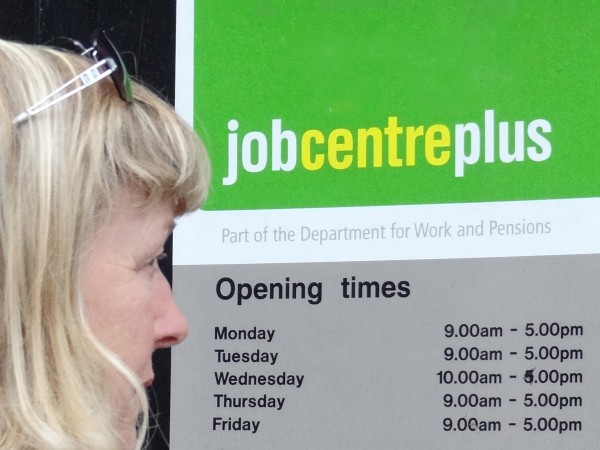 Unemployment is a key macroeconomic objective for governments across the world. The unemployment rate for the UK now stands at 7.9% according to the ONS, which recorded 2.56 million people out of work. But why is unemployment of such importance? What are the costs?
Unemployment is a key macroeconomic objective for governments across the world. The unemployment rate for the UK now stands at 7.9% according to the ONS, which recorded 2.56 million people out of work. But why is unemployment of such importance? What are the costs?
The economy is already in a vulnerable state and with unemployment rising by 70,000 people between December and February 2013, the state of the economic recovery has been questioned. Indeed, following the news of the worsening unemployment data, the pound fell significantly against the dollar, suggesting a lack of confidence in the British economy.
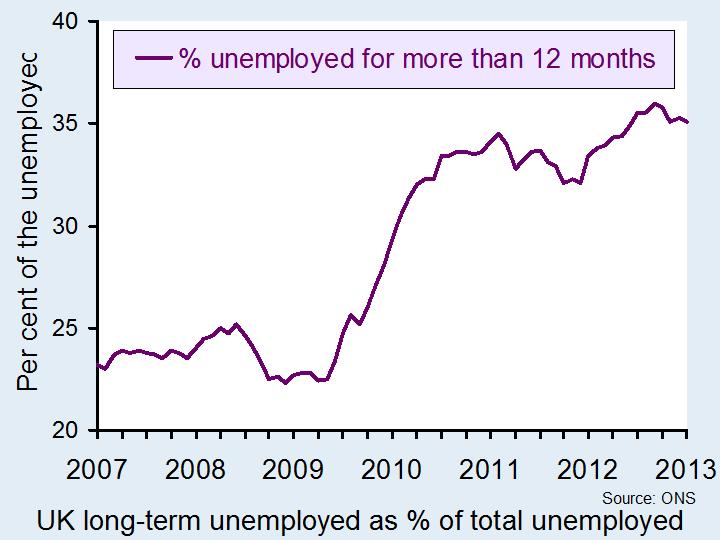 Although the increase in the number of people out of work is concerning, perhaps of more concern should be the number of long-term unemployed. The ONS suggests that more than 900,000 have now been out of work for more than a year. Not only does this pose costs for the individual in terms of lost earnings and skills, but it also imposes costs on friends and family and the wider economy. (Click here for a PowerPoint of the first chart, which shows the percentage of unemployed people out for work longer than 12 months.)
Although the increase in the number of people out of work is concerning, perhaps of more concern should be the number of long-term unemployed. The ONS suggests that more than 900,000 have now been out of work for more than a year. Not only does this pose costs for the individual in terms of lost earnings and skills, but it also imposes costs on friends and family and the wider economy. (Click here for a PowerPoint of the first chart, which shows the percentage of unemployed people out for work longer than 12 months.)
The chief executive of the Prince’s Trust focused on the costs of youth unemployment in particular, saying:
Thousands of these young people are long-term unemployed, often facing further challenges such as poverty and homelessness. We must act now to support these young people into work and give them the chance of a better future.
(Click here for a PowerPoint of the second chart, which shows how much higher the unemployment rate is for young people aged 18 to 24 than it is for the working age population as a whole.)
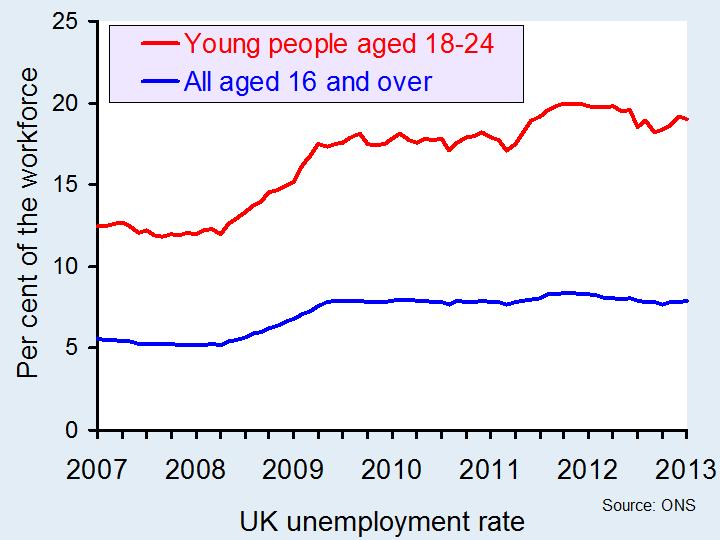 Furthermore, with so many people unemployed, we are operating below full-employment and thus below our potential output. Furthermore, the longer people are out of work, the more likely it is that they will lose their skills and thus require re-training in the future or find that there are now fewer jobs available to them based on their lower skill level.
Furthermore, with so many people unemployed, we are operating below full-employment and thus below our potential output. Furthermore, the longer people are out of work, the more likely it is that they will lose their skills and thus require re-training in the future or find that there are now fewer jobs available to them based on their lower skill level.
In addition to this there are monetary costs for the government through lower tax receipts, in terms of income tax, national insurance contributions and even VAT receipts. With more people unemployed, the numbers claiming various unemployment-related benefits will rise, thus imposing a further cost on the government and the taxpayer. Another cost to the government of this latest data is likely to be the expectations of the future course of the economy. Numerous factors affect business confidence and unemployment data is certainly one of them. The concern is that business confidence affects many other variables as well and until we receive more positive data, the economy recovery is likely to remain uncertain. The following articles consider this topic.
UK unemployment rise adds to pressure on Osborne’s austerity strategy The Guardian, Phillip Inman (18/4/13)
Unemployment figures are ‘worrying’, David Cameron’s spokesman says The Telegraph, Peter Dominiczak (17/4/13)
UK unemployment rises to 2.56 million BBC News (17/4/13)
Unemployment jumps to 7.9% as rise in the number of young people out of work takes figure ‘dangerously’ close to a million Mail Online, Leon Watson (17/4/13)
Unemployment up as stay-at-home mothers head back to the job-centre Independent, Ben Chu (17/4/13)
Jobs data points to finely balanced market Financial Times, Brian Groom (18/4/13)
 Hugh’s review: making sense of the stats BBC News (19/4/13)
Hugh’s review: making sense of the stats BBC News (19/4/13)
Questions
- How is unemployment measured?
- What are the costs to the individual of being unemployed?
- What are the wider non-monetary costs to society?
- Explain the main financial costs to the wider economy of a rising unemployment rate.
- Illustrate the problem of unemployment by using a production possibility frontier.
- Could there be a negative multiplier effect from a rise in unemployment?
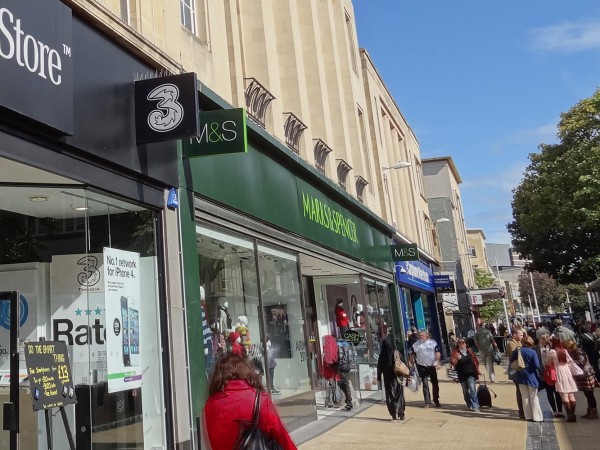 Adverts are increasingly diverse, ranging from families using various products and promoting their qualities, to a gorilla drumming, a horse dancing and a monkey drinking tea! But, how important is advertising to a product’s brand. Does it have a positive effect on sales and profitability?
Adverts are increasingly diverse, ranging from families using various products and promoting their qualities, to a gorilla drumming, a horse dancing and a monkey drinking tea! But, how important is advertising to a product’s brand. Does it have a positive effect on sales and profitability?
The key role of advertising is to sell more products and many firms spend a huge amount on advertising campaigns. Indeed, over £16bn was spent on advertising in 2012. Given that the economy is still vulnerable and many firms have seen their sales and profits decline, this is a huge amount. Procter & Gamble spent over £200 million, British Sky Broadcasting spent £145 million and Tesco spent £114 million in 2011.
 Advertising increases consumer awareness of the product and its features, but also actively aims to persuade people to purchase the product. By differentiating the product through adverts a company aims to shift the demand curve to the right and also make it more inelastic, by persuading customers that there are no (or few) close substitutes.
Advertising increases consumer awareness of the product and its features, but also actively aims to persuade people to purchase the product. By differentiating the product through adverts a company aims to shift the demand curve to the right and also make it more inelastic, by persuading customers that there are no (or few) close substitutes.
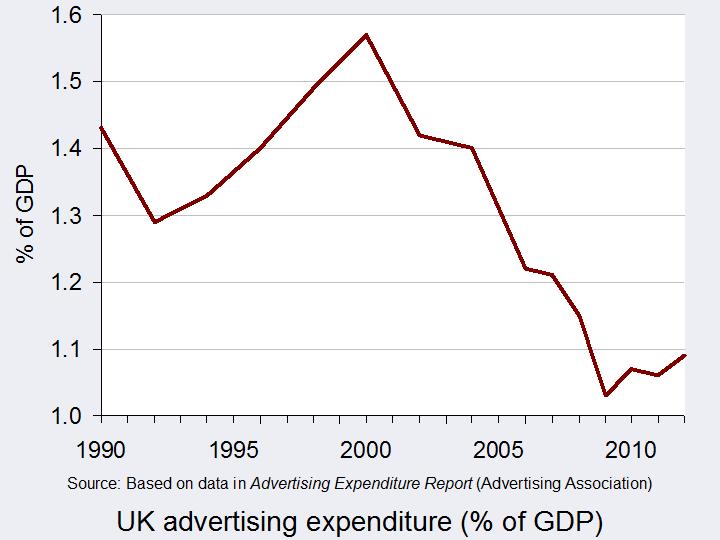 Since the start of the economic downturn in 2008, advertising expenditure has fallen, as companies have seen a decline in their budgets. From a high of £18.61 billion in 2004, the Advertising Association found that it fell to £14.20 billion in 2009 at constant 2008 prices. In the last few years, advertising expenditure has remained at around £14.5 billion. But, is cutting back on advertising a sensible strategy during a recession? Of course budgets are tight for both firms and consumers, but many suggest that media-savvy firms would actually benefit from maintaining their advertising. By doing so firms could take advantage of weaker competitors by increasing their market share and establishing their brand image in the long run.
Since the start of the economic downturn in 2008, advertising expenditure has fallen, as companies have seen a decline in their budgets. From a high of £18.61 billion in 2004, the Advertising Association found that it fell to £14.20 billion in 2009 at constant 2008 prices. In the last few years, advertising expenditure has remained at around £14.5 billion. But, is cutting back on advertising a sensible strategy during a recession? Of course budgets are tight for both firms and consumers, but many suggest that media-savvy firms would actually benefit from maintaining their advertising. By doing so firms could take advantage of weaker competitors by increasing their market share and establishing their brand image in the long run.
 It’s also important to consider another link between economic growth and advertising. Research suggests that advertising can be an important factor for economic growth. A three-year study undertaken by the Advertising Association and Deloitte, commencing in January 2013 suggests that for every £1 spent on advertising in the UK, £6 is generated for the wider economy. Based on these predictions, the estimated £16bn that was spent on ad campaigns in 2011 added over £100 billion to the UK’s GDP.
It’s also important to consider another link between economic growth and advertising. Research suggests that advertising can be an important factor for economic growth. A three-year study undertaken by the Advertising Association and Deloitte, commencing in January 2013 suggests that for every £1 spent on advertising in the UK, £6 is generated for the wider economy. Based on these predictions, the estimated £16bn that was spent on ad campaigns in 2011 added over £100 billion to the UK’s GDP.
 So, perhaps encouraging more advertising is the answer to the UK’s economic dilemma. This is certainly the opinion of Matt Barwell, the consumer marketing and innovation director of Diageo Western Europe, who said:
So, perhaps encouraging more advertising is the answer to the UK’s economic dilemma. This is certainly the opinion of Matt Barwell, the consumer marketing and innovation director of Diageo Western Europe, who said:
People fundamentally believe in advertising but a lot of the conversation focuses on negative elements. People rarely get the opportunity to talk about the positive role advertising plays in terms of wealth creation, exports and the social benefits that it provides. These are all things that many of us take for granted.
If private firms can therefore be encouraged to boost their marketing campaigns, jobs may be created, demand for products will rise and with the help of the multiplier, the economy may strengthen. Advertising has both pros and cons and opinions differ on what makes a good advert. But, whatever your opinion of the role of advertising, it is certainly an important aspect of any economy. The following articles take a view of advertising.
Articles
Could we advertise ourselves out of recession? Marketing Week, Lucy Tesseras (31/1/13)
Advertising in times of recession: A question of value The Open University, Tom Farrell (13/3/09)
Recession spending on advertising and R&D Penn State, Smeal College of Business
Nothing to shout about The Economist (30/7/09)
UK’s payday lenders face restrictions on advertising Reuters (6/3/13)
Value claims improve advertising effectiveness in recessionary times Com Score, Diane Wilson (17/9/13)
Advertising in a bad economy About Advertising, Apryl Duncan
Advertising worth £100bn to UK economy The Telegraph, Graham Ruddick (31/1/13)
Can advertising be the motor that gets the struggling UK economy out of first gear? More about advertising (26/2/13)
Adverts ‘worth £100bn to UK’ Independent, Giddeon Spanier (30/1/13)
Report
Advertising Pays – How advertising fuels the UK economy Advertising Association & Deloitte (30/1/13)
 Advertising Pays – How advertising fuels the UK economy: Accompanying video presentation Advertising Association & Deloitte: on YouTube (30/1/13)
Advertising Pays – How advertising fuels the UK economy: Accompanying video presentation Advertising Association & Deloitte: on YouTube (30/1/13)
Questions
- What is the role of advertising?
- Using a demand and supply diagram, illustrate and explain the role of advertising.
- During a recession, why would you expect advertising expenditure to fall? What impact would you expect this to have in your diagram from question 1?
- How might firms that sustain their advertising expenditure during a downturn benefit?
- Explain the link between advertising and the economy.
- Why could a higher level of advertising boost economic growth?
- Are there any negative externalities from advertising?
 Each month the accountancy firm BDO publishes its Business Trends Indices. These indices “are ‘polls of polls’ that pull together the results of all the main UK business surveys”. The latest report shows that the January 2013 Optimism Index was its lowest since the report began 21 years ago.
Each month the accountancy firm BDO publishes its Business Trends Indices. These indices “are ‘polls of polls’ that pull together the results of all the main UK business surveys”. The latest report shows that the January 2013 Optimism Index was its lowest since the report began 21 years ago.
The Optimism Index predicts business performance two quarters ahead. In January 2013 it was 88.9. The way the index is constructed, a reading of 95 or more suggests that firms are optimistic about business performance. Clearly, they were pessimistic.
 Although there was an increase in hiring intentions, firms were still predicting a fall in output. The indices for optimism, employment and output are shown in the chart. (Click here for a PowerPoint.)
Although there was an increase in hiring intentions, firms were still predicting a fall in output. The indices for optimism, employment and output are shown in the chart. (Click here for a PowerPoint.)
As Peter Hemington, Partner, BDO LLP, commented:
In spite of a strengthening Labour Market, business confidence continues to weaken, and improved hiring intentions are not translating into growth plans. It seems the damaging effects on businesses of five years’ zigzagging economic growth, has left them wary of making concrete plans for expansion and resigned to the ‘new normal’ of economic stagnation.
To end this cycle, it is imperative that the Government implements plans to expedite growth. Without growth incentives, we will continue to see UK businesses reluctant to invest and expand, which poses a grave threat to the UK’s economic recovery.
The following articles comment on the gloomy mood of business and on its implications for output and investment. They also look at the implications for government policy.
Articles
Confidence slumps despite optimism from manufacturers Insider News (11/2/13)
Fears of a triple-dip recession return as survey puts business confidence at a 21-year low This is Money (11/2/13)
Pressure grows on ministers for growth strategy Yorkshire Post (11/2/13)
Triple-dip jitters as business confidence hits 21-yr low Management Today, Michael Northcott (11/2/13)
Report and data
Business Trends: Business confidence hits 21-year low signalling economic contraction BDO Press Release (11/2/13)
BDO Monthly Business Trends Indices, February 2013 – Full Report BDO (11/2/13)
Business and Consumer Surveys European Commission: Economic and Financial Affairs
Questions
- What reasons are given by the report for a decline in business optimism?
- Explain how an accelerator/multiplier interaction could compound the recession or help to cause a bounce back from recession.
- How does business sentiment in one country affect business sentiment in others?
- In the absence of a change in its fiscal stance, what policies could the government adopt to increase business confidence?
- Why might firms’ hiring intentions increase even though they are predicting a fall in output?
 Events on the high street continue to grab the headlines. These are incredibly difficult times for retailers as households’ spending power continues to be squeezed and, in conjunction with technological change, households’ spending habits continue to evolve. In this blog we examine what the latest data from Consumer Trends tells us about the composition of household spending.
Events on the high street continue to grab the headlines. These are incredibly difficult times for retailers as households’ spending power continues to be squeezed and, in conjunction with technological change, households’ spending habits continue to evolve. In this blog we examine what the latest data from Consumer Trends tells us about the composition of household spending.
There are 12 broad categories of household spending. Each tells us something about the amount of expenditure in the UK by both UK and foreign households. In 2012 Q3, the value of household consumption taking place within the UK was £242 billion. During the whole of 2011, spending amounted to £929 billion. In real terms (after adjusting for price changes) spending in the UK fell by 1 per cent in 2011. Evidence of a rebound is limited. In the year to 2012 Q3, the volume of spending was just 0.8 per cent higher. In contrast, from 1998 to 2007 the average real rate of growth was 3.5 per cent.
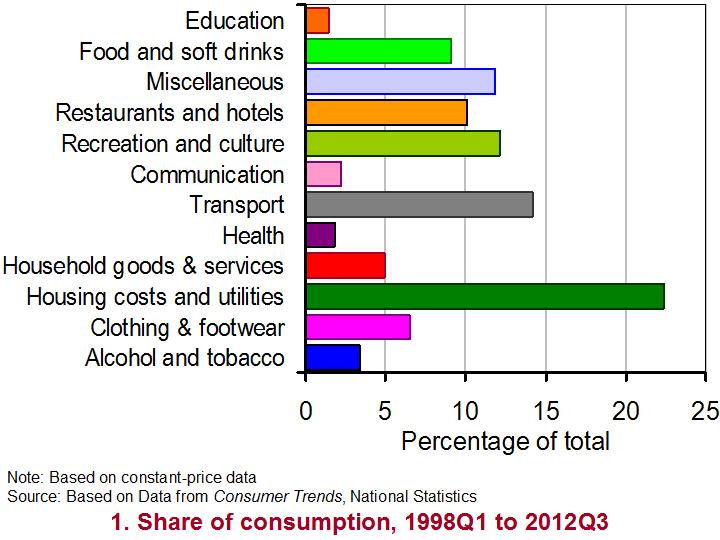 As Chart 1 shows, the largest component of household spending in the UK is on spending associated with running a home. This component includes rents, expenditures incurred in undertaking routine maintenance and the payments for electricity, gas and water. Since 1997 this component has typically accounted for (after adjusting for price changes) 24 per cent of household consumption in the UK (22 per cent in 2012 Q3). The second largest consumption category is transport. This includes expenditure on purchasing vehicles, fuels, maintenance of vehicles and the costs of rail and air transport. It has typically accounted for about 15 per cent of expenditure (14 per cent in 2012 Q3).
As Chart 1 shows, the largest component of household spending in the UK is on spending associated with running a home. This component includes rents, expenditures incurred in undertaking routine maintenance and the payments for electricity, gas and water. Since 1997 this component has typically accounted for (after adjusting for price changes) 24 per cent of household consumption in the UK (22 per cent in 2012 Q3). The second largest consumption category is transport. This includes expenditure on purchasing vehicles, fuels, maintenance of vehicles and the costs of rail and air transport. It has typically accounted for about 15 per cent of expenditure (14 per cent in 2012 Q3).
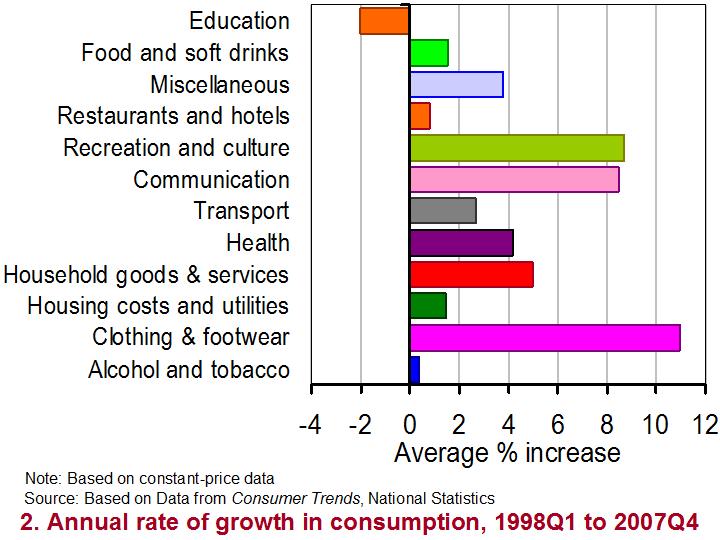 Chart 2 shows the real annual rate of growth in expenditure of our 12 consumption categories from 1998 Q1 to 2007 Q4 and so before the financial crisis really took hold. It enables us to measure how the volume of purchases changes over a 12-month period. From it, we can see that all categories, except education, contributed to the positive real growth of household spending in the UK. The fastest growing component was clothing and footwear recording real growth of almost 11 per cent per year. The second most rapidly growing component was recreation and culture, which includes items ranging from package holidays, garden plants and musical instruments to sports equipment, cameras and books. This component grew, after adjusting for inflation, by nearly 9 per cent per year.
Chart 2 shows the real annual rate of growth in expenditure of our 12 consumption categories from 1998 Q1 to 2007 Q4 and so before the financial crisis really took hold. It enables us to measure how the volume of purchases changes over a 12-month period. From it, we can see that all categories, except education, contributed to the positive real growth of household spending in the UK. The fastest growing component was clothing and footwear recording real growth of almost 11 per cent per year. The second most rapidly growing component was recreation and culture, which includes items ranging from package holidays, garden plants and musical instruments to sports equipment, cameras and books. This component grew, after adjusting for inflation, by nearly 9 per cent per year.
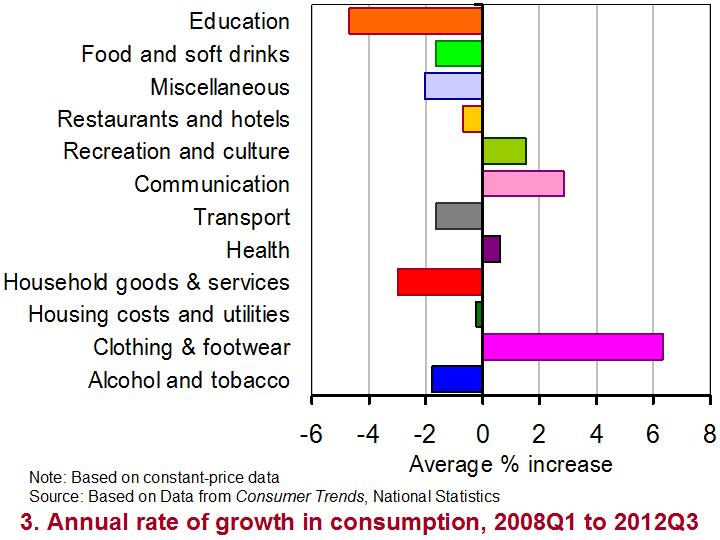 Chart 3 focuses on the real annual rate of growth since 2008 Q1. It paints a very different picture. Now only four categories have on average recorded positive annual rates of growth. Again, the volume of purchases of clothing and footwear has grown most rapidly by 6.3 per cent per year. While purchases on items associated with recreation and culture continue to grow, the annual rate of growth since 2008 is only 1.5 per cent compared with 9 per cent prior in the previous 10 years or so.
Chart 3 focuses on the real annual rate of growth since 2008 Q1. It paints a very different picture. Now only four categories have on average recorded positive annual rates of growth. Again, the volume of purchases of clothing and footwear has grown most rapidly by 6.3 per cent per year. While purchases on items associated with recreation and culture continue to grow, the annual rate of growth since 2008 is only 1.5 per cent compared with 9 per cent prior in the previous 10 years or so.
(Click here for a PowerPoint of all three charts.)
One category of spending that has been especially badly affected by events since 2008 has been household goods and services. This includes items such as furniture, major and small household appliances (including electrical appliances), carpets and tools. While the volume of purchases grew by 5 per cent per year from 1998 to 2007, since 2008 they have typically contracted at a rate of 3 per cent per year. This category helps to illustrate the difficult trading environment currently faced by many businesses in the UK.
Data
Consumer Trends, Q3 2012 Statistical Bulletin National Statistics
Consumer Trends Time Series Dataset, Q3 2012 National Statistics
Articles
Surprise UK retail sales drop fuels trip-dip recession fears The Guardian, Larry Elliott (15/2/13)
UK retail sales fall unexpectedly in January BBC News, (15/2/13)
Retail sales: What the economists say The Guardian, Phillip Inman (15/2/13)
Another dark day for the high street as John Lewis cuts jobs The Guardian, Sarah Butler (13/2/13)
Republic chains enters administration BBC News, (15/2/13)
High Street retailers: Who has been hit the hardest? BBC News, (13/2/13)
Questions
- Using Charts 2 and Chart 3 construct a short briefing paper comparing the fortunes of difficult components of consumption before and after 2008.
- What economic factors could explain the contrasting impact of the economic slowdown since 2008 on the components of consumption?
- Can economic factors alone explain the success of failure of businesses? Explain your answer drawing on real-world examples.
- What factors do you think are likely to be important for the growth in consumer spending in the months ahead?
 When you look at the linked articles below, I’m sure many of you will be thinking that this is an odd choice for an economics blog! However, part of the economic relevance of ‘cyber-crime fighters’ relates to the relative skills of workers and the gap that exists between the most and least skilled workers in the UK.
When you look at the linked articles below, I’m sure many of you will be thinking that this is an odd choice for an economics blog! However, part of the economic relevance of ‘cyber-crime fighters’ relates to the relative skills of workers and the gap that exists between the most and least skilled workers in the UK.
Crime has always existed, but as technology has developed the types of crime committed have grown along with the complexity of them. For certain crimes, a very skilled individual is needed. With this emergence of technologically advanced crimes, those fighting crimes have also had to improve their skills and techniques. Thus crime-fighters have become more technologically advanced as well.
The problem is that the number of skilled workers able to deal with things like cyber crime has not kept pace with the demand for them and thus we have a skills gap. Usage of the Internet has continued to grow, creating more and more opportunities for cyber crime. However, the UK supply of IT and cyber-security professionals has not been able to keep pace. Therefore, we have a shortage of skilled labour in this area.
 More investment into research and education is occurring, with the aim of addressing this shortage, but it is expected to take many years before supply catches up to demand. In particular, more investment is needed in the sciences and technology subjects at school to create the supply at university level. The NAO said that:
More investment into research and education is occurring, with the aim of addressing this shortage, but it is expected to take many years before supply catches up to demand. In particular, more investment is needed in the sciences and technology subjects at school to create the supply at university level. The NAO said that:
‘The current pipeline of graduates and practitioners are unable to meet demand.’
A second area of relevance to economics is the cost of cyber crime. The NAO estimated that the cost is somewhere between £18bn and £27bn per annum. However, on the other side, is there a case that crime actually benefits the macroeconomy by requiring government investment. As cyber crime has grown, so has the demand for cyber-crime fighters and this has created more jobs. With more jobs comes increased spending and the benefits of the multiplier. The following articles consider cyber crime and the impact it is having.
National Audit Office warns UK needs more skilled cyber crime fighters BBC News (12/2/13)
IT staff shortages raise cyber crime risk Sky News (12/2/13)
UK planning ‘Cyber Reserve’ defence force BBC News (3/12/12)
Britain vulnerable from cyber attacks for at least 20 years The Telegraph, Tom Whitehead (12/2/13)
Britain targeted by 120,000 every DAY with cost to country thought to total £27billion Mail Online, Jack Doyle (12/2/13)
Questions
- Illustrate the demand for and supply of labour curves in the market for cyber crime fighters. How is the equilibrium wage determined?
- If there is increased investment in education, how would this affect the shape and position of the MRP curve and what impact would this have on your diagram?
- If there is a shortage of cyber crime fighters, what does that suggest about the position of the two curves? Illustrate this situation and explain why it is a problem.
- Which factors would be considered by NAO in estimating the costs of cyber crime?
- Explain why crime can pay.
- How does the macroeconomy benefit from increased crime? Illustrate this on a diagram.
- Does your answer to question 5 above suggest anything about the effectiveness of using GDP as a measure of welfare?
- How is the multiplier effect relevant?
 Unemployment is a key macroeconomic objective for governments across the world. The unemployment rate for the UK now stands at 7.9% according to the ONS, which recorded 2.56 million people out of work. But why is unemployment of such importance? What are the costs?
Unemployment is a key macroeconomic objective for governments across the world. The unemployment rate for the UK now stands at 7.9% according to the ONS, which recorded 2.56 million people out of work. But why is unemployment of such importance? What are the costs? Although the increase in the number of people out of work is concerning, perhaps of more concern should be the number of long-term unemployed. The ONS suggests that more than 900,000 have now been out of work for more than a year. Not only does this pose costs for the individual in terms of lost earnings and skills, but it also imposes costs on friends and family and the wider economy. (Click here for a PowerPoint of the first chart, which shows the percentage of unemployed people out for work longer than 12 months.)
Although the increase in the number of people out of work is concerning, perhaps of more concern should be the number of long-term unemployed. The ONS suggests that more than 900,000 have now been out of work for more than a year. Not only does this pose costs for the individual in terms of lost earnings and skills, but it also imposes costs on friends and family and the wider economy. (Click here for a PowerPoint of the first chart, which shows the percentage of unemployed people out for work longer than 12 months.) Furthermore, with so many people unemployed, we are operating below full-employment and thus below our potential output. Furthermore, the longer people are out of work, the more likely it is that they will lose their skills and thus require re-training in the future or find that there are now fewer jobs available to them based on their lower skill level.
Furthermore, with so many people unemployed, we are operating below full-employment and thus below our potential output. Furthermore, the longer people are out of work, the more likely it is that they will lose their skills and thus require re-training in the future or find that there are now fewer jobs available to them based on their lower skill level. Hugh’s review: making sense of the stats BBC News (19/4/13)
Hugh’s review: making sense of the stats BBC News (19/4/13)











